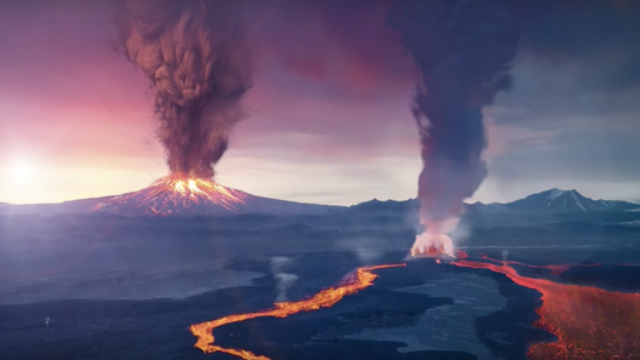Bad news if you’re looking to ditch this planet for another one far, far away. According to new research from NASA, planets in the habitable zone in red dwarf star systems — including much-hyped exoplanet Proxima b — might lose too much oxygen to support liquid water, and therefore, life. Goddammit.
Image: NASA Goddard/Conceptual Image Lab
Traditionally, scientists have tried to determine habitable zones based on the amount of heat and light the host star gives off. But this new research takes stellar eruptions and the rate of a atmospheric oxygen loss into account to build a more refined picture of where in a star system Earth-like planets may lie. The team developed a model to investigate how the high-energy X-rays and ultraviolet emissions that red dwarfs spew off cause oxygen in habitable zone planet atmospheres to escape into space. This “astmospheric erosion” could spell bad news for fans of Proxima B, the exoplanet located in the red dwarf star system Proxima Centauri less than five light years away. The researchers’ new findings were published on February 6 in The Astrophysical Journal Letters.
“The more X-ray and extreme ultraviolet energy there is, the more electrons are generated and the stronger the ion escape effect becomes,” Alex Glocer, a Goddard astrophysicist and co-author of the paper, said in a press release. “This effect is very sensitive to the amount of energy the star emits, which means it must play a strong role in determining what is and is not a habitable planet.”
[referenced url=”https://gizmodo.com.au/2016/08/how-life-could-survive-on-the-newly-discovered-exoplanet-proxima-b/” thumb=”https://i.kinja-img.com/gawker-media/image/upload/t_ku-large/wxom7d4igqcnkw2e53ba.png” title=”How Life Could Survive On The Newly Discovered Exoplanet Proxima B” excerpt=”After a week of rampant speculation, astronomers have officially announced the discovery of Proxima b, a potentially habitable world circling our nearest neighbouring star. But even as engineers prepare for an interstellar voyage to scope out Proxima b for signs of life, some experts warn that M dwarf systems like Proxima Centauri may be unable to support life at all.”]
The team calculated the rate of atmospheric oxygen lost by considering the red dwarf star’s age, and its distance from the planet in question. Proxima b, for example, orbits its star 20 times closer than Earth orbits our Sun. Because of its tight orbit around Proxima Centauri, researchers estimated that the planet experiences atmosphere-stripping stellar storms every two hours. Based on assumptions about Proxima b’s size and composition, its oxygen will be gone in about 10 million years.
In short, things are not looking good for life on Proxima B — or other planets around red dwarf stars, which are the most common stars in the galaxy. Roughly 20 to 30 of the stars closest to our solar system are red dwarfs.
Maybe this research just confirms how special we are.
“We have pessimistic results for planets around young red dwarfs in this study, but we also have a better understanding of which stars have good prospects for habitability,” NASA solar scientist Vladimir Airapetian, lead author of the paper, said. “As we learn more about what we need from a host star, it seems more and more that our Sun is just one of those perfect parent stars, to have supported life on Earth.”
For those who still want to believe (*raises hand*), there’s hope. Ultimately, this is just a modelling study — in a few years, we’ll finally get our first cold hard data on Proxima b’s atmosphere through studies by the James Webb telescope and others. And maybe, one day, the interstellar starship from Stephen Hawking and that Russian billionaire will surprise us all by confirming it’s actually pretty chill on Proxima b. Fingers crossed.
